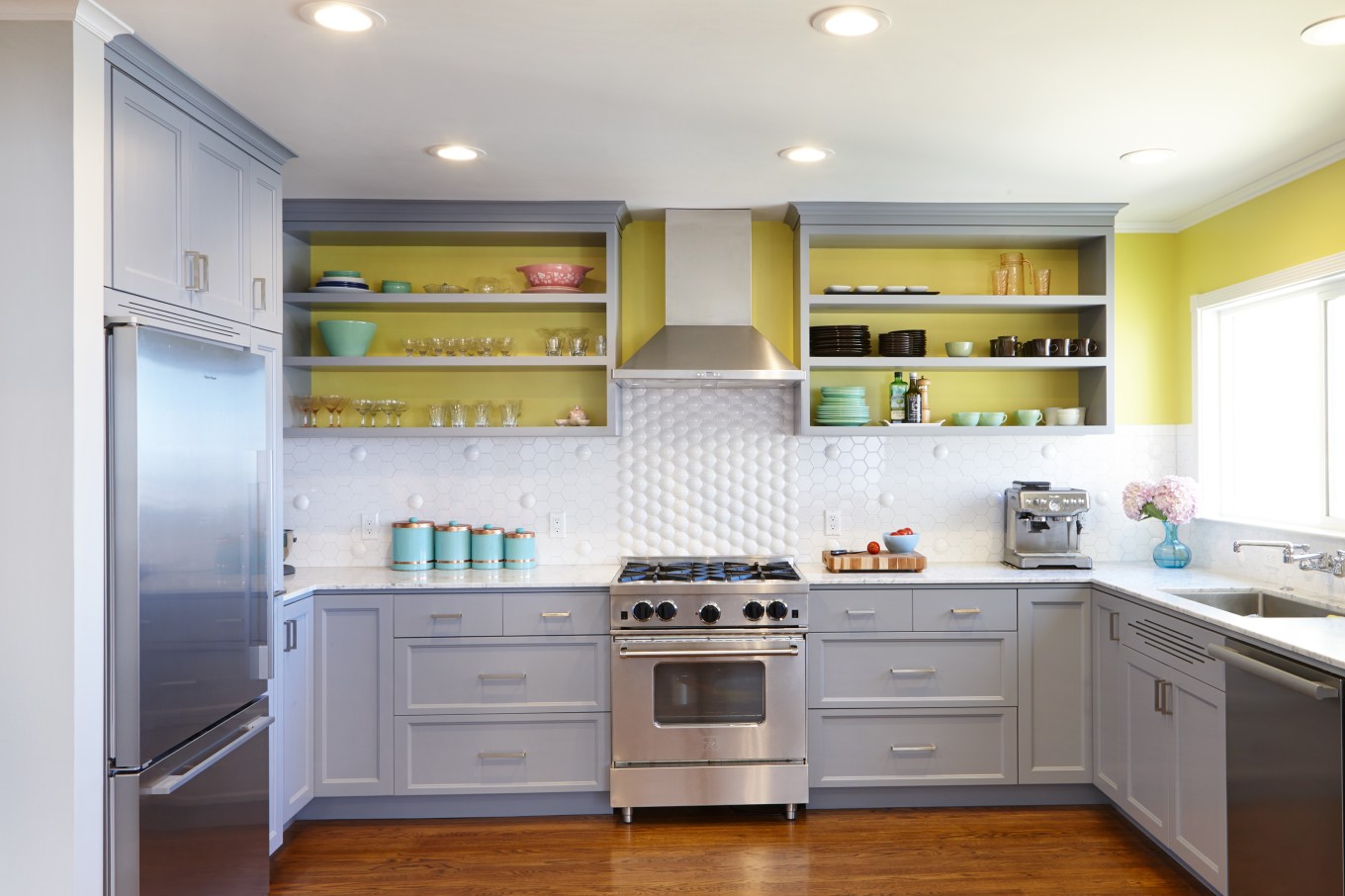Life is messy, and much of it happens in the kitchen. This is where you simmer your nana’s famous tomato sauce for hours, adorning your wall with red splatters. And after a cookie-making session with the kids, it’s where you scrub away sticky fingerprints from cabinet doors.
Your kitchen cabinets and walls take a lot of abuse. Choosing the right paint can mean they’ll always look great, even after the umpteenth scrubbing. Choosing the wrong paint can mean the opposite — you could actually wash away the paint along with the grime.
Scott Specker, who owns Five Star Painting in Cumming, Ga., has seen his fair share of issues caused by the wrong paint. Picking a poor paint product, he says, can leave you with only two options: Paint or stain all over again, or deal with the ugly. Ugh.
Don’t force yourself into a redo. Here’s how to make the right decision at the outset for a more functional kitchen.
Embrace the Sheen
You might love the pristine look of flat paint (and sure, it makes a gorgeous backdrop for your family room or bedroom). But when it comes time to coat your kitchen, select a finish that is both easy to clean and tough enough to handle repeated scrubbing. That means getting shiny.
High-gloss or semi-gloss paint is ideal for any spots that might get splattered, sprayed, or spilled on, like above (or in lieu of) your backsplash, behind your trash can, or everywhere if you love bringing spaghetti sauce to a rolling boil. Glossier finishes also protect your walls from water and grease, which will “bubble up and not absorb into the paint” upon contact, says Specker. “Wipe it off and you won’t have any leftover stains.”
If you insist on the flat look for your kitchen, there are specialty (read: pricey) paints out there that offer easy cleaning. Specker recommends Benjamin Moore’s Aura to give your kitchen walls that high-style matte finish — as long as you’re willing to spend $99 a gallon.
Related: The Get-it-Right Guide to Choosing Paint Finishes
The Best Paint for Kitchen Cabinets
- Choose a paint that hardens when it dries.
- Oil paint is an affordable choice, but a major hassle.
- Some water-based paint are alternatives, but they are pricey.
“Because cabinets open and close, receiving a lot more traffic overall than a wall, you’ll want to use a paint that hardens,” Specker says.
Many pros recommend using an oil-based paint, which cures to a harder surface, preventing damage and mess. Buyer beware: Oils can be a wee smelly and do take forever to dry.
But once again, paint industry innovations provide a (spendy) alternative. Specker recommends either Benjamin Moore Advance, which costs about $80 per gallon, or Sherwin-Williams ProClassic for about $67 a gallon. Both dry hard and durable without the smell and wait of oil-based paints.
Picking a poor paint product can leave you with only two options: Paint or stain all over again, or deal with the ugly.
Scott Specker, Cumming, Ga.
Shine Those Baseboards
A glossy finish isn’t just for kitchen cabinets — it’s for your kitchen baseboards, too, says Specker.
Baseboards suffer a ton of damage, from muddy scuffs after your daughter’s soccer games to dirt, dust, and crumbs knocked off the countertops during cooking. Your kitchen already takes long enough to clean. Why add an extra half-hour hunched over the baseboards?
Don’t Forget the Ceiling
The one surface in the kitchen where you want to avoid glossy paint is the ceiling. Ceilings love to crack and settle, so cover up those inconsistencies with some (yes, now you have permission) flat paint. The less reflective the surface, the less obvious those cracks will look from the ground. Glossy paints will actually emphasize these errors and problem spots.
Flat finish bonus: Between their cracks and the fact that you’re working in the most awkward position ever, ceilings can be super hard to paint, even for experts. So no worries if you don’t do a perfect job. A flat finish “really does hide a lot of imperfections and irregularities,” Specker says. Why, thank you, paint.
Zap Those Microbes Away
Sad kitchen irony: The room you want to be the freest from dangerous microbes is naturally prone to them. From the mold danger zones around your sink, inside cabinets, and along the walls, to all the food-borne, sneeze-borne, and spill-borne opportunities for bacteria to get out of control, your kitchen can be a wee bit scary on the microscopic level.
Lucky for you, there are paints to help. Zinsser Mold Killing Primer is a water-based fungicidal protective coating registered by the Environmental Protection Agency. You can use it to paint over and kill existing mold, mildew, moss, fungi, odor-causing bacteria, and any other fungal organisms. It also prevents the growth of mold, mildew, and other fungal organisms on the paint film. The cost is about $49 per gallon.
Although not everyone needs antimicrobial paint, if you’ve battled kitchen mold in the past, have an illness-prone family, or just really love knowing every surface is as safe as possible at all times, these products were made for you.
Related: They’ll Think You Cheated and Hired a Pro If You Use These 5 Painting Hacks
